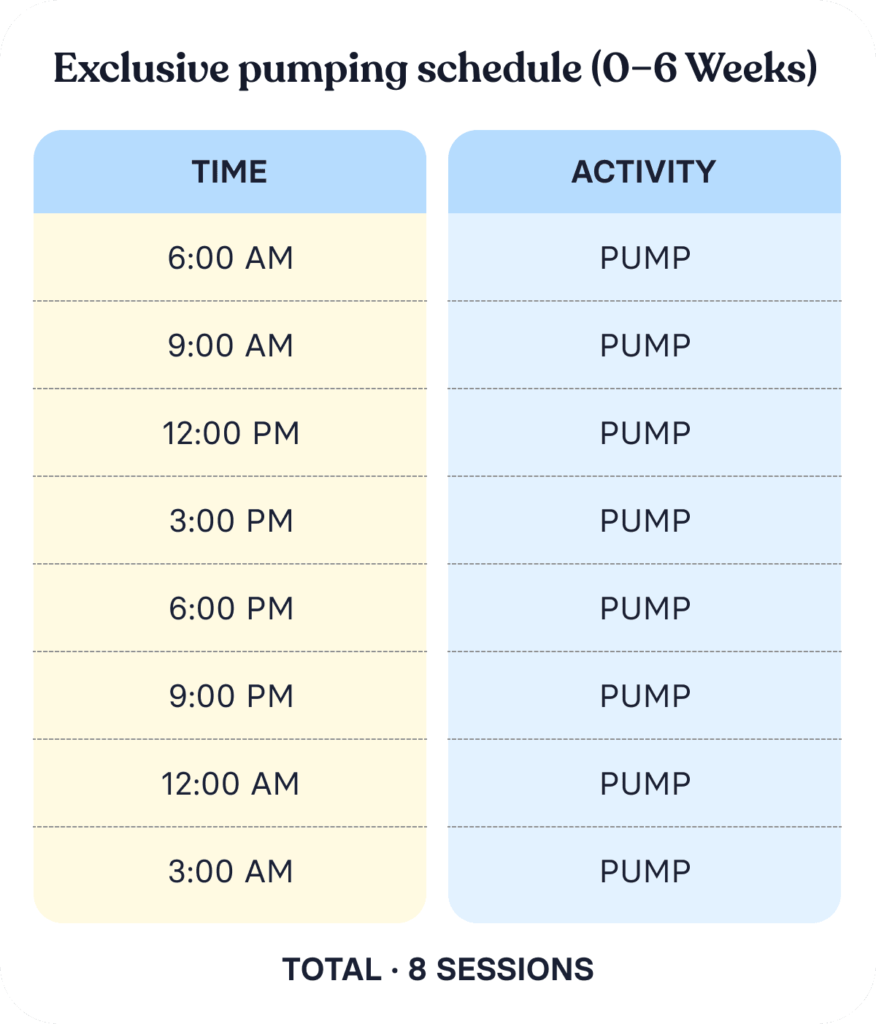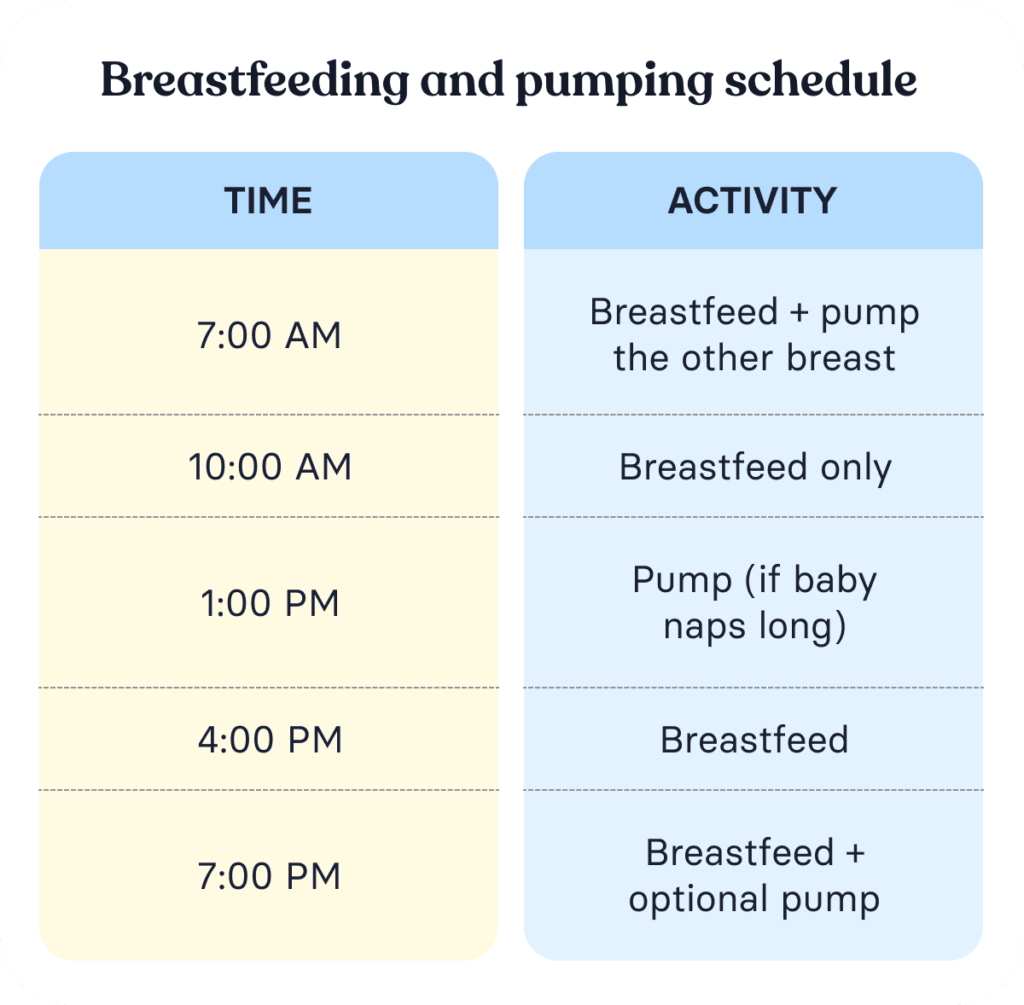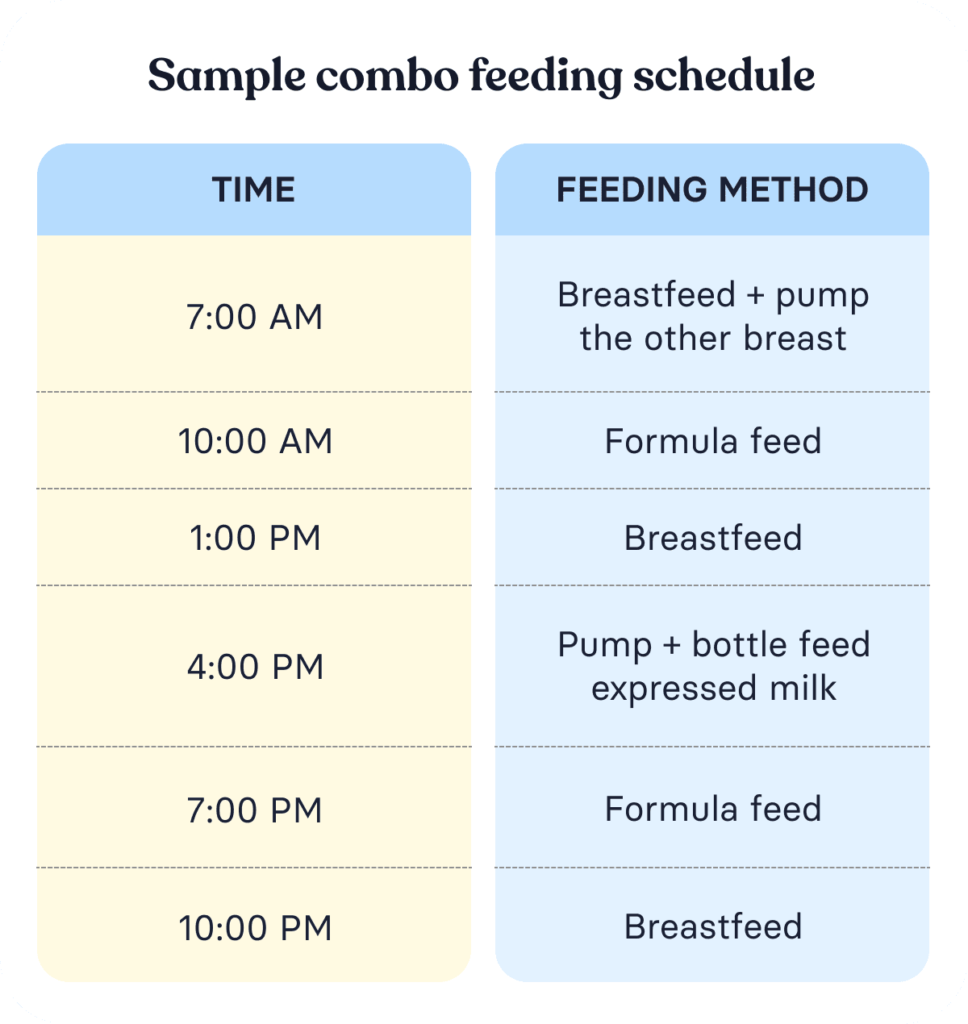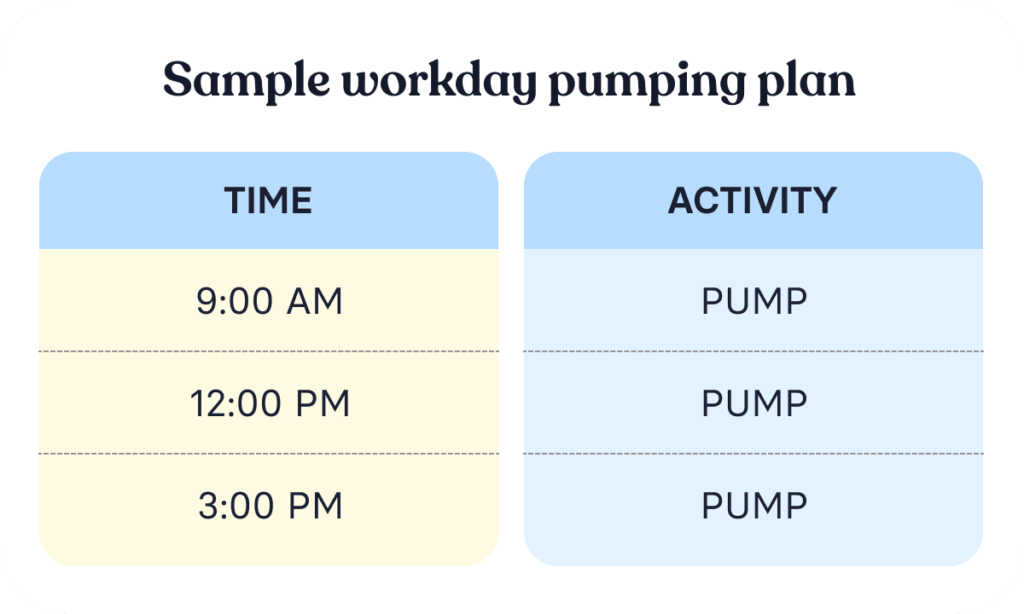Parenting
0 min read
How often should I pump? A realistic schedule for new parents

Cradlewise Staff
You can’t stop staring at those tiny fingers, the rise of their chest with each breath, the softness of their skin. Everything about your newborn feels magical.
But alongside the wonder, quiet exhaustion creeps in. Between soothing, feeding, and adjusting to your new rhythm, there’s so much to learn—especially when it comes to nourishment.
Breastfeeding, pumping, or both—feeding your baby often brings more questions than you expected.
Two of the first that come up: When should I start pumping? and How often should I pump?
Whether you’re building a freezer stash, preparing to return to work, or just trying to make sense of it all, finding a pumping rhythm that works for you can make a world of difference.
Also, this blog features expert insights from Dr. David Ghozland, an OB-GYN and owner of David Ghozland MD, whose practice specializes in women’s health, cosmetic gynecology and regenerative medicine.
When to start pumping?
If your baby is latching well, feeding regularly, and gaining weight, most lactation consultants recommend waiting about 2 to 3 weeks before introducing a pump. This allows your body to establish its milk supply in sync with your baby’s natural feeding cues.
However, you may want or need to start sooner in certain situations:
- Your baby is in the NICU or separated from you after birth.
- Your baby has trouble latching or feeding directly.
- You plan to return to work soon and want to build a freezer stash.
- You’re choosing to exclusively pump from the beginning.
In these cases, it’s safe and encouraged to begin pumping earlier, even in the first few days.
When is it too early to pump breast milk?
There’s no harm in pumping early if there’s a medical need or feeding issue. You can safely start pumping within the first 24 hours after birth if your baby isn’t nursing directly. In these cases, follow a schedule that mimics a newborn’s feeding pattern:
Pump every 2 to 3 hours, or about 8–12 times a day, including during the night.
This frequent stimulation helps protect your milk supply and supports early milk production until direct breastfeeding can begin or resume.
How long should you pump?
Most pumping sessions last around 15 to 20 minutes, or until milk flow slows down. This helps ensure your breasts are emptied well, encouraging ongoing milk production and preventing discomfort or blocked ducts.
If you’re double pumping (pumping both breasts at the same time), the session may be more efficient and could take slightly less time.
New moms may find they need a bit longer at first, especially in the early weeks while establishing supply. Over time, as your body adjusts, sessions may become shorter and more predictable.
Some parents may finish in 10 minutes; others might need closer to 25. Trust your body and be consistent.
How often should I pump?
If you’re exclusively pumping:
- Aim for 8 to 10 pumping sessions per 24 hours, especially in the first 6 to 8 weeks.
- Double pumping, expressing milk from both breasts at the same time, can save time and increase prolactin response
- Each pumping session should last 15 to 20 minutes, or until milk flow slows significantly.
- Even if you don’t get much at first, keep going. This consistent stimulation helps increase your milk supply over time.
If you’re breastfeeding & pumping:
- You can pump after morning feeds, when milk volume is typically highest.
- Or, wait 30 to 60 minutes after feeding to pump without interfering with your baby’s demand.
- Pump once or twice daily to build a small freezer stash or relieve engorgement.
Sample pumping schedules
Now that you know when and how often to pump, let’s look at what a typical day can actually look like. These sample schedules can help you plan your sessions around your routine.
If you’re exclusively pumping, that is, giving your baby only breast milk through pumping, this sample schedule can help you stay on track, maintain your supply, and ease the mental load of figuring it all out day by day.
Exclusive pumping schedule
This exclusive pumping schedule helps build a strong supply and prevents clogged ducts or engorgement.

Breastfeeding and pumping schedule:
If you’re combining nursing with pumping, this flexible schedule supports your baby’s needs while helping you build a small stash and maintain supply.

Are you combo feeding your baby?
Combination feeding, also known as combo feeding, means you’re nourishing your baby with both breast milk and formula. Many parents choose this flexible approach to balance their baby’s needs with their own. It could be because of low milk supply, return to work, or simply finding what works best for their family.

Aim to pump whenever your baby receives a bottle. This helps your body stay in sync with your baby’s demand and protects your milk supply over time.
Pumping when you return to work
Returning to work is a big step, but having a clear pumping plan can give you confidence and peace of mind.
When you return to work, try to pump every 3 to 4 hours; typically 2 to 3 times during your shift. Try to mirror your baby’s feeding schedule at home to protect your supply.

Power pumping: Boosting low supply
If you’re trying to increase milk production, you may benefit from a power pump schedule.
- Pump for 20 minutes, rest for 10
- Pump for 10 minutes, rest for 10
- Pump for 10 more minutes

Did you know?
Power pumping once a day for 2 to 3 consecutive days triggers more output. It mimics cluster feeding and helps boost milk supply in just a few days.
Hyperlactation: When your supply feels like too much
While low milk supply is a common concern, some parents experience the opposite—producing more milk than their baby needs. This condition is called hyperlactation, and it’s more common than most people realize, especially in the early weeks or when pumping too frequently without a consistent routine.
Why does this happen?
Hyperlactation is often triggered by overstimulation that is frequent pumping sessions, long pumping durations, or switching breasts too often. Your body interprets this as a signal that your baby needs more, so it keeps producing at a higher rate.
What can help?
- Block feeding: Offer one breast for 2 to 3 hours before switching to the other. This reduces stimulation and balances foremilk and hindmilk.
- Scale back on pumping: If you’re pumping more than 10 to 12 times a day or for too long per session, gradually reduce frequency and duration (under guidance).
- Hand express instead of pump: If you’re only trying to relieve fullness, hand expression can help without overstimulating supply.
- Use laid-back positions: Nursing in a more reclined position can help your baby manage the flow better.
- Lactation support: Every body is different. Consult a lactation consultant before making big changes. They can help tailor strategies to your needs without risking clogged ducts or mastitis.

Cradlewise Smart Crib
Smarter Sleep for Your Baby
An award-winning crib—loved by parents, approved by experts.
0 to 24 months of use
Automatic soothing
Built-in video & sound machine
AI-powered sleep insights
Customizable soundtracks
Get 2 extra hours of sleep nightly
The big question: Hand pump vs. electric pump
Both types help you pump breast milk effectively, choose what fits your lifestyle best.
A hand pump is great for occasional or on-the-go use. It is quiet, portable, and affordable.
An electric pump (single or double) is ideal for daily or exclusive pumping, offering speed and hands-free options.
Store your milk in cooler bags, and clean pump parts thoroughly between sessions.
How to make pumping safer and smoother?
Pumping may feel overwhelming at first, but a few simple habits can make it more comfortable and hygienic.
- Wash your hands before each session
- Clean pump parts thoroughly after every use
- Use a properly fitting flange to avoid pain and maximize milk flow
- Double pumping with a hands-free bra saves time and boosts efficiency
- Always label and store milk based on date and volume
Conclusion
Every baby is different, and so is every pumping journey. Whether you’re exclusive pumping, combo feeding, or just easing into a pumping schedule, know this. No perfect plan exists; only the one that works for you and your baby.
With consistency, support, and some flexibility, pumping is less of a chore. It becomes a way to stay connected with your baby, even when you are apart.
FAQs
Q: What is the 5 5 5 rule for breast milk?
A: The 5-5-5 rule means breast milk can stay fresh for 5 hours at room temp, 5 days in the fridge, and 5 months in the freezer. Always store in clean, labeled containers.
Q: Can I pump into the same bottle all day?
A: It’s not recommended. Add freshly pumped milk to chilled milk only if both are at the same temperature, and follow safe storage guidelines.
Q: Can pumping too much lower milk supply?
A: Over-pumping doesn’t usually reduce supply, but it can cause nipple trauma or signal your body to regulate supply inefficiently. Balance is key.
Q: How do I know if I’m pumping too much or too little?
A: If you’re experiencing engorgement, pain, or low output despite frequent sessions, you might need to adjust. A lactation consultant can guide you.
Q: Is it selfish to pump so I can get more rest or go back to work?
A: Not at all. Prioritizing your rest and goals helps you show up better for your baby. Pumping is a smart and loving choice for many reasons.
Sources
- About Breastpumping: La Leche League International . Pumping Milk
- Pumping milk: Lepore J. New Yorker. January 19, 2009, If breast is best, why are women bottling their milk?
- Hyperlactation: Trimeloni & Spencer, Journal of the American Board of Family Medicine 2016, “Diagnosis and Management of Breast Milk Oversupply”
You may also like
You may also like



